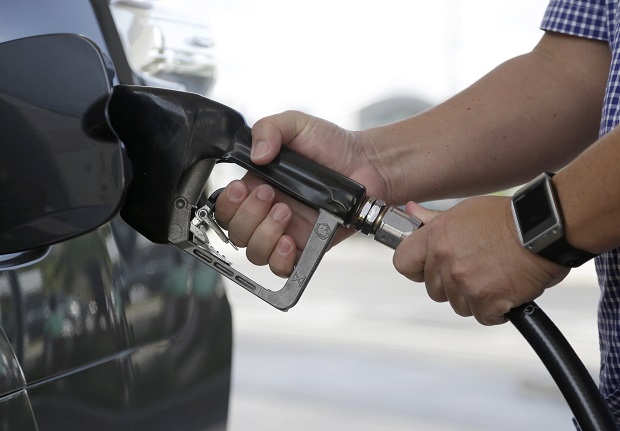Fuel marking in 2018 to curb oil smuggling, raise P44B – DOF

(AP Photo/Lynne Sladky, File)
MANILA — The fuel marking system eyed for implementation starting early 2018, will allow the government to collect additional revenues of up to P43.8 billion lost to smuggling each year, according to the Department of Finance.
In a statement, the DOF said on Monday that fuel marking, which would form part of the first package of the Duterte administration’s comprehensive tax reform program, would be implemented by its attached
agencies, the Bureaus of Customs and of Internal Revenue.
Procurement for the service provider will be conducted via competitive bidding in the next few months, with contract awarding eyed by the third quarter, according to Finance Undersecretary Karl Kendrick T.
Chua.
Chua said such would allow the rollout of the fuel marking system by January 2018.
“The project cost for a five-year implementation is expected to be fully recoverable as early as the first year of implementation as the unit cost of fuel marking is low, as low as nine centavos per liter based on past pilots,” Chua said.
Based on DOF estimates, foregone revenues, specifically unpaid value-added tax and excise taxes due to oil smuggling or misdeclaration, reached P26.87 billion in 2016.
But Manila-based multilateral lender Asian Development Bank and the domestic oil industry had higher estimates of P37.5 billion and P43.8 billion, respectively, annually, the DOF noted.
Chua earlier said they expected the cost of fuel marking to be shouldered by oil firms.
Fuel marking is included in House Bill No. 5636 which contains the DOF’s proposal to ease the tax burden on income earners while slapping new taxes on consumption.
Besides mandatory use of fuel marking, HB 5636 included tax administration measures such as mandatory issuance of e-receipts; mandatory interconnection of large and medium firms point of sale
machines and accounting system with the BIR; and relaxation of bank secrecy for fraud cases.
Fuel marking is a system by which the government uses chemicals and advance technology to track fuel products being imported into , processed, marketed and traded in the country to prevent smuggling, tax evasion or in some cases, subsidy abuse. The Asian Development Bank’s website explains the objectives of a fuel marking program: “To prevent fuel fraud, governments have developed comprehensive fuel-marking programs, using advanced technology molecular markers and sophisticated management systems that result in timely, actionable intelligence, allowing governments to mitigate tax evasion and subsidy abuse, minimize financial losses, and raise revenues.”
“Fuel markers can range from simple colored dyes to unique covert markers and their respective detection methodologies,” the ADB explained. SFM
